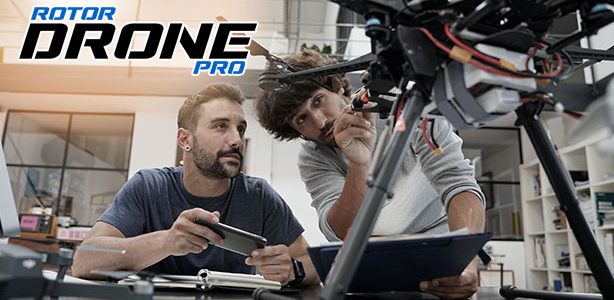If you are thinking about taking your drone with you when you travel, there is a lot to consider. Factors range from the obvious, such as deciding which type of carrying case you should use, to the more complex, such as knowing the rules for carrying lithium batteries onboard a commercial aircraft.
I was recently faced with these considerations when I took a trip from my home in San Diego, California, to visit my family near Philadelphia, Pennsylvania. Choosing a case for my new Mavic Air would turn out to be the easiest part of the trip preparation. And since I knew that both the Federal Aviation Administration (FAA) and the airlines had specific rules for carrying lithium batteries onboard commercial aircraft, I researched those rules and familiarized myself with the process.
I also researched the area in advance to locate potential flying sites and to review any local drone regulations. With many public parks putting restrictions on operating drones, it is important to research the rules and regulations for your potential flying sites before arriving at your destination.
This article details my experience throughout this trip.

Hobby Tiger carrying case for Mavic Pro 2.
Type of Case to Buy
Just throwing your drone into any backpack or suitcase can easily result in damage, even if you are extra careful when packing. Drones are aircraft and have many delicate parts that may easily break if not handled correctly. Buying a specific case for your drone is highly recommended and is especially important if you are planning a hiking trip or will be traveling to several destinations. A variety of cases meet the size limitations for carry-on luggage and will ensure the drone will arrive in working order.
There are several drone-case manufacturers out there, and many cases are custom-made for specific models. Ultimately, the choice comes down to personal preference and the type of travel you are planning. There are two general types of drone travel bags: soft shell and hard shell. For example, if you are going to be staying in a hotel and traveling in a rental car, a soft case may be right for you. Those who will be hiking through the wilderness to remote destinations will most likely want a backpack-style case. If you have a large drone and you need to check it with the airline while traveling abroad, you may opt for a hard case with a lock.
Many people prefer custom cases with secure foam cushioning; some of these cases are designed to accommodate the drone without removing the propellers, providing extra room for small accessories. Others prefer cases with Velcro foam dividers, which are removable and customizable. Backpack straps make transportation easy while traveling because they keep your hands free to carry other luggage.
I know some folks who only buy military-grade heavy-duty cases that are lockable. These cases are perfect for airport travel, but some are so large that they require special transportation. Others want cases that are completely waterproof and dustproof to keep the electronics safe in humid environments.
Before you purchase a case for your drone, you should take some time to consider what type of traveling you plan to do and then narrow down the field to the general type of case. From that point, you can compare cases from different manufacturers, read reviews online, and shop for the best price.

Statue of Washington in Washington Crossing Historic Park.
Baggage: Checked or Carry-On?
For several reasons, all drones should be carefully packed in carry-on luggage if possible. First, according to the Montreal Convention, airlines are only liable for losses up to $1,000 for checked luggage. When traveling internationally, theft and lost luggage can be common issues, particularly if your flight has one or more connections. If your drone is worth more than $1,000 and you cannot bring it onto the plane, you should consider shipping it using a service such as DHL, FedEx, or UPS and fully insuring the shipment.
Small drones that fit in cases that meet the carry-on size requirements can be brought onboard the plane, but larger drones should be shipped using the services mentioned above, where they can be fully insured through to their destination. If you must check them in on a commercial airline, you should purchase supplemental insurance coverage for the full value of the drone and its accessories.
Drone Batteries and Airliners
Federal aviation regulations for domestic airlines require all spare (i.e., not in the equipment) lithium batteries to be carried inside the passenger cabin, not in checked luggage. According to the FAA website, airline passengers may carry an unlimited number of spare lithium-ion batteries (up to 100 watt-hours [Wh] each) for personal or professional use. With airline approval, devices can contain larger lithium-ion batteries (101–160 Wh each), but spares of this size are limited to two batteries only in carry-on baggage.
To determine the Wh rating of your battery, multiply the volts (V) by the amp-hours (Ah). A 12V battery with 8 Ah, for example, is rated at 96 Wh (12 x 8 = 96). If the battery capacity is listed in milliamp hours (mAh), simply divide by 1,000 to get the Ah capacity and then multiply by the number of volts.
The FAA also states that spare batteries must be protected from damage and short circuits. Metal objects such as keys, coins, tools, or other batteries can potentially come into contact with both terminals of a battery, creating a circuit or path for electricity to flow through. Electrical current flowing through this unprotected short circuit can cause extreme heat and sparks, or even start a fire. To prevent short circuits, keep spare batteries in a battery case, lithium-safe bag, or separate compartment. Make sure loose batteries are secured and can’t move around. Place tape over the terminals of unpackaged batteries to help protect them from short-circuiting.
All battery-powered devices must be protected from accidental activation and heat generation. The best way to do this is to remove the battery from the drone so that it becomes a spare. Remember that spare lithium batteries are prohibited in checked baggage. Checked baggage includes bags checked at the gate or plane side. External chargers are also classified as batteries.
Due to issues of lithium batteries catching fire in recent years, airlines have become stricter about transporting them. Lithium batteries are considered “dangerous goods,” and as a result, packing them properly is imperative if you want to avoid issues when bringing them on the plane. A lithium-safe or fire-retardant bag is a convenient way of safeguarding spare batteries during transit. The flame-retardant bag ensures that if the battery does catch fire, it will not spread outside of the bag. Failure to properly pack lithium batteries can result in the airline seizing them or even or denying you from boarding. If you are planning to travel abroad, there may be additional considerations for international carriers flying to foreign countries. You should always check the specific requirements for your airline. It is important to note that some airlines have more stringent restrictions than the ones imposed by the FAA. Southwest Airlines, for example, limits the number of spare batteries to 20 per passenger.
Where Can I Fly?
When I was planning my trip, I looked at the area on Google Maps to find some potential flying sites. I started my search by looking at nearby parks and other places of interest that had large, open areas. After finding a few locations that I thought would be interesting, I went to their websites to find out if they had any restrictions on flying drones.
The first location I wanted to fly in was the Bryn Athyn Cathedral in Huntingdon Valley, Pennsylvania. It is a Gothic cathedral built in the early 1900s, which I thought would be a great subject for aerial photography. I checked its website and read that it had a “no-drone” policy; nevertheless, I was not discouraged. I found the contact information and sent a request for an exception to the policy. I wrote that I was an FAA-certified drone pilot, had insurance, and was writing an article for a magazine. I was a little disappointed that my request was denied, but I was gracious and made an appointment to visit the cathedral without my drone.
Undeterred by that experience, I set my sights on another historic location. The site where George Washington crossed the Delaware River has been preserved as the Washington Crossing Historic Park. On December 25, 1776, the Delaware River was the setting for one of the pivotal events of the American Revolution. After crossing the river at night, Washington and his Continental Army landed and began their march to Trenton, where they defeated the British troops in a surprise attack that turned the tide of the Revolutionary War.
Since this location is part of the Pennsylvania state park system, I went to its website and learned that, while flying drones was generally prohibited, some locations had been set aside that permitted the activity. Washington Crossing Historic Park, unfortunately, was not on that list, so I found the contact information and sent a request to fly my drone. This time, I was surprised to receive a response that asked for my credentials and insurance. I sent a copy of my Part 107 RPIC (remote pilot in command) certificate and my drone insurance certificate. Within a few days, I was given approval to fly my drone during the upcoming trip. I was asked to give a few days’ notice before my arrival and to check in with the park manager before flying.
When I arrived, I was surprised to see about a dozen school buses and hundreds of children running around the park. I checked in with the park manager, and he said that those visitors would be departing shortly. I spent some time walking around the park with my wife (and visual observer), scouting locations to launch my drone. After the children cleared the area, I had most of the park to myself. I decided on a few launch sites that were remote. The weather was perfect that day: mid-70s and mostly sunny.
Because of the bright sunshine, I decided to use the new high dynamic range (HDR) feature on my Mavic Air. HDR images ensure that an image is captured with the best exposure. The HDR function automatically takes an overexposed, underexposed, and correctly exposed image in rapid sequence. These three images are then combined to create an image with the ideal exposure by choosing the best aspects of each image. With the new HDR function, overexposed and underexposed images are processed to give a more natural look to the final image. All the aerial photos for this article were captured using the new HDR mode with my Mavic Air.

Flipside 200 and Mavic Air.
Capturing an aerial view of this historic site was a great experience. Taking aerial photos of colonial-era buildings added a new dimension to visiting these historical sites. Getting up above the trees and looking at the lush Delaware River Valley, I experienced a view that few people get to enjoy. While the dense wooded environment in the park makes it difficult to see the surrounding area, having a small and capable drone resolved that challenge.

Delaware River and Washington Crossing Bridge.
Final Thoughts
Traveling with your drone can bring a new dimension to your experience while away from home. Having a bird’s-eye view of historical buildings or even natural areas can add a whole new perspective to a familiar landscape. Proper planning and knowledge of regulatory restrictions will help minimize the problems you may experience when traveling with your drone and lithium batteries. Have a safe and enjoyable flight!
Text & photos by Gus Calderon



















